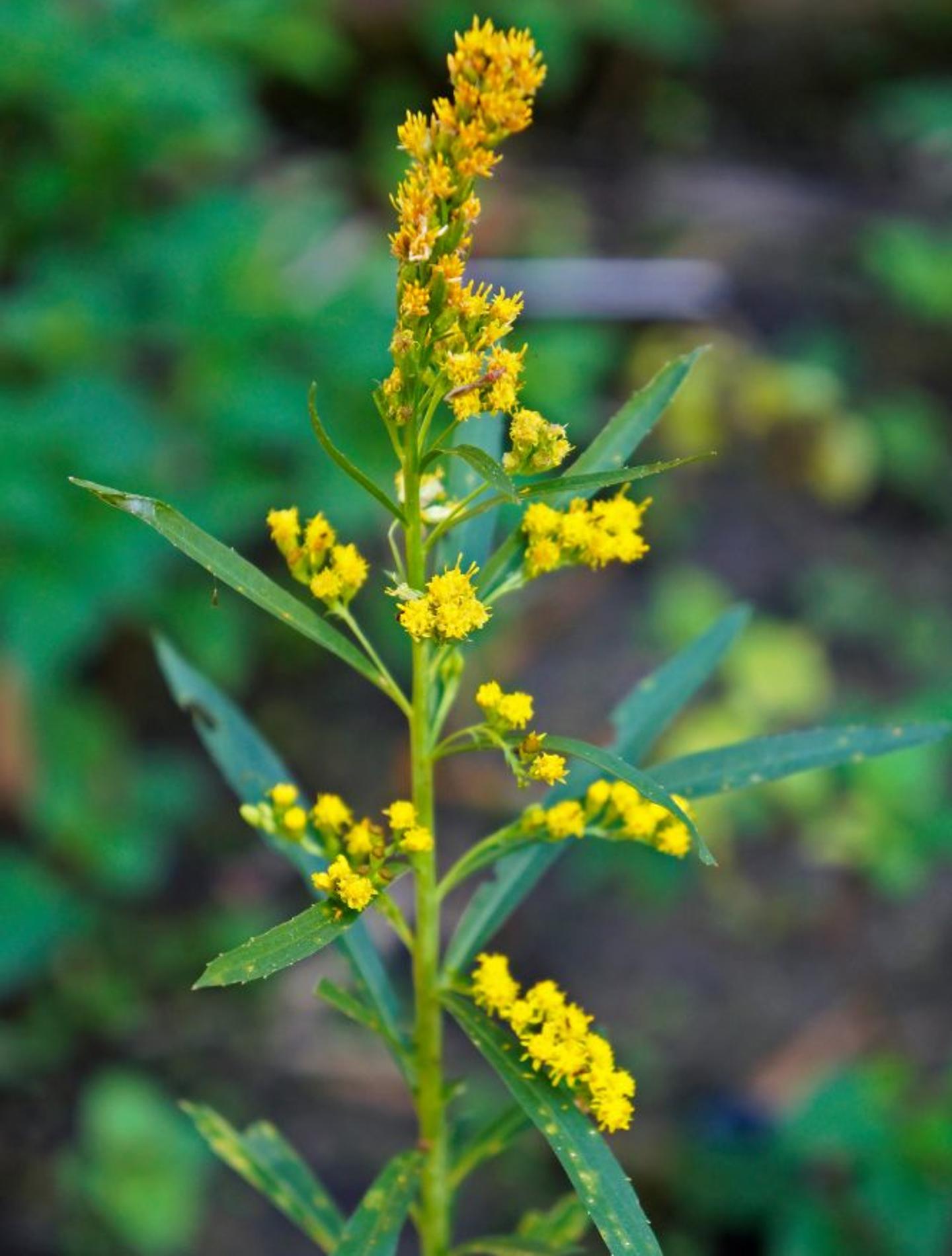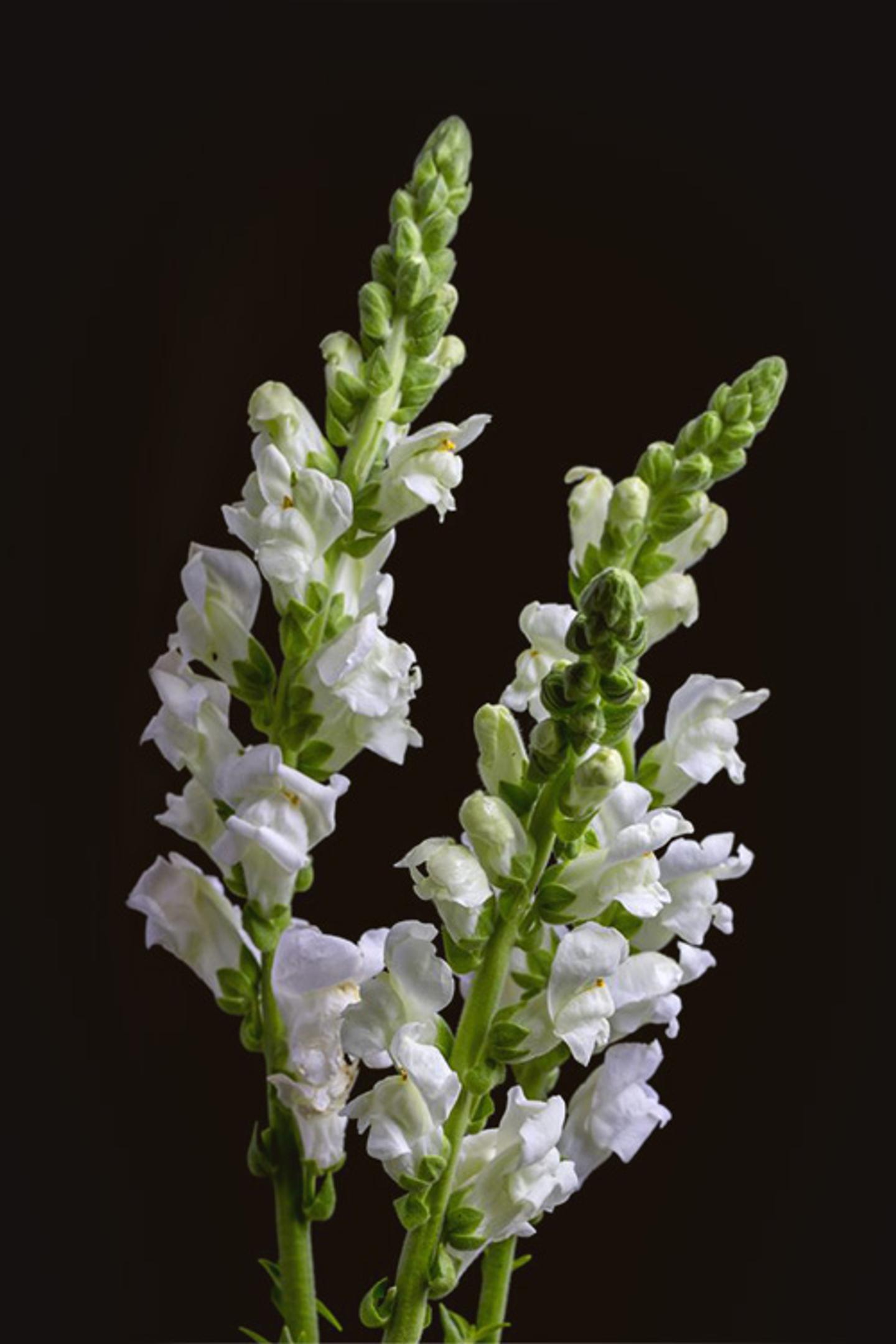Flower Meanings
Solidago


The Meaning of Solidago
Solidago’s most popular meanings are:
- Encouragement
- Positivity
- Celebration of good news & new ventures
- Good thoughts
- Good luck
The British believed this bloom to point towards golden treasures and mark hidden spots due to its tiny golden blooms. [1]
Historically, solidago has been used as a symbol of good fortune, growth, and encouragement. Because of its ability to survive in diverse, harsh environments, goldenrod represents good luck and a pioneering spirit (pretty fitting given its origins in the meadows and pastures of North America).
Solidago was named as the state flower of Nebraska and Kentucky. However, given its fast-growing (and somewhat aggressive) nature, solidago is sometimes regarded as a weed or as an invasive plant throughout North America. In Europe, however, they are prized golden jewels. [2]
The name solidago comes from the Latin word solida, meaning whole and ago meaning to make.
In Italy, this herb is known as Solidago, as well as in Spain, however, the Spanish do also refer to this plant as Vara de oro. In French, goldenrod translates to Verge d’ or and in German, to the very fitting Goldrute.
In the US, goldenrod also goes by the common names woundwort and Aaron’s rod, however, each species has its own general names. [1]
What Does Solidago Smell Like?
This perennial has a rich herb-like aroma that’s often referred to as quite sweet. [7]

"But on the hills the golden-rod, and the aster in the wood, And the yellow sunflower by the brook, in autumn beauty stood."
William Cullen Bryant
The History of Solidago
Solidago has made its mark on American history. In other words…America and goldenrod go way back.
After the Boston Tea Party, the tea made from goldenrod became known as liberty tea. This was the first known liberty tea ever to exist, and for quite a while it was the colonist’s beverage of choice while protesting against British taxation.
This liberty tea was later exported to China because of its esteemed quality.
On October 26, 1918 a national publication called the Independent published its first survey on the American opinions of a national flower. The survey found that Americans were torn between four flowers:
- Columbine
- Clover
- Daisy
- Solidago
The debate continued further into the century.
In 1942, solidago was still holding strong as a front runner for America’s National Flower, but had developed a nasty reputation for causing allergies, specifically, hay fever.
While goldenrod’s pollen was then believed to be an aeroallergen, scientists have since discovered that this is not the case. The pollen produced by solidago is actually not airborne, and it just so happens that this bloom blossoms at the same time as ragweed, which we all know is the true culprit.
In the end, solidago did not win big as America’s National Flower. In 1986 the debate was settled and the rose received the honor of being the country’s national flower. [1]
DID YOU KNOW - Solidago Fun Fact
Short goldenrod is a very rare species of goldenrod. It’s only found in two locations, Kentucky and Indiana. This species of solidago is about to go extinct. [3]

How to Grow Solidago
Some solidago grow in sunny meadows and prairies, while others prefer semi-shaded woodland locations, boggy environments, and even salty coastal spots.
Since each different species is found growing in a wide range of environments with different soil conditions, the native habitat of the species you are planting should always be considered.
Solidago grows from either clump-forming crowns or rhizomes. Clump-forming varieties are better suited for manicured garden beds and boarders because they won’t spread as aggressively.
Plant more rambunctious rhizomatous varieties where you can easily contain the spread or in a naturalistic garden setting where they won’t be as intrusive.
Most varieties of solidago prefer full sun, with the exception of the woodland species which thrive in partial shade.
No special soil is needed, however, some varieties will adapt well to heavy clay, sandy, or rocky soils. Try not to plant solidago in overly rich soils, as this can lead to leggy growth.
Goldenrod is easy to grow from seeds. You can sow your solidago seeds in late fall or early winter. They will begin the germination process once temperatures begin to warm the following spring. Wherever you plant your seeds, be sure to sow them on the soil’s surface as they will need the sunlight to germinate.
Since solidago is in fact a wildflower, they need very little care once fully established.
Goldenrod is drought tolerant and disease resistant. Don’t worry about fertilizing, as this usually only leads to floppy growth. [4]
DID YOU KNOW - Solidago Fun Fact
Thomas Edison made tires for his Model T Ford that was given to him by his friend Henry Ford using rubber from the Goldenrod plant. [5]

How to Care for Solidago
Solidago in general has quite a long vase life, however, as with all cut flowers, it’s important to note that these flowers have all been removed from their natural life source, so a little extra care can go a long way in keeping your fresh cut blooms alive for as long as possible.
- Get your fresh cut blooms into fresh water ASAP. Whether you’ve cut them directly from the garden or purchased them from your local florist, keeping them in fresh water is essential.
- If you’ve purchased your goldenrod from a local florist, remove any wrappings or cellophane as soon as you can. Leaving the flowers in this encasing causes the leaves to sweat (yes, sweat!) and the blooms to wilt.
- If you’re cutting solidago from your garden, cut them in the morning hours. This is when water reserves in the stem are at their highest (especially after a cool night).
- Clean your stems of any dirt or residue before placing them in fresh water as this can cause the water to go slimy way before it should.
- Remove any leaves or foliage that would fall below the waterline to avoid rotting.
- Trim the base of your stems at a 45 degree angle to keep the stem as open as possible (and for increased water flow throughout the bloom!).
- P.S. Cells begin to grow over the end of flower stems when they’re cut, aiming to seal the cut, preventing water from traveling up the stem. Trimming off the end removes this problem.
- Some people say that cutting with scissors crushes the tip of the stem and to use a sharp knife instead. But scissors or garden secateurs are best for woody stems like these. [6]
When to Give Solidago as a Gift
Since solidago is believed to bring wealth and happiness, goldenrod makes the perfect housewarming gift.

References:
- 1 - academics.hamilton.edu
- 2 - flower.style
- 3 - pansy maiden
- 4 - garden design
- 5 - wnit.org
- 6 - david do money
- 7 - wildflower.org
Flower Meanings — keep discovering

Ranunculus
Arguably, one of the most beautiful blooms around—the ranunculus is a wedding-season favorite!

Rose
Roses, the world’s most popular flower, come in just about every color imaginable and express a vast range of emotions. Gardeners obsess over them, and even gas stations sell them. Break out the rose-colored reading glasses for a crash course in this iconic bloom.

Shamrock
Known for its Irish roots, there’s no doubt you’ll see shamrocks everywhere when St. Patrick’s Day comes around.

Snapdragon
Oh snap, we’re talking about Snapdragons!

Ranunculus
Arguably, one of the most beautiful blooms around—the ranunculus is a wedding-season favorite!

Rose
Roses, the world’s most popular flower, come in just about every color imaginable and express a vast range of emotions. Gardeners obsess over them, and even gas stations sell them. Break out the rose-colored reading glasses for a crash course in this iconic bloom.

Shamrock
Known for its Irish roots, there’s no doubt you’ll see shamrocks everywhere when St. Patrick’s Day comes around.

Snapdragon
Oh snap, we’re talking about Snapdragons!
Ready to send beautiful flowers?
Our guided experience helps you send a one-of-a-kind arrangement perfect for every occasion.
Send Flowers